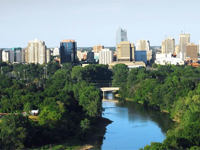Biochar and a New Approach to Carbon Management
Room: 1056
Methods of Carbon Dioxide Removal (CDR) aim to mimic the Earth's natural mechanisms by capturing CO2 from the atmosphere and storing it in permanent, non-degradable forms. A crucial but often neglected aspect is the Earth's "organic carbon pathway," which is a significant and effective natural means of carbon storage. While it's commonly believed that mineralization is the only permanent method for CO2 storage, this presentation highlights the vital role of the "organic carbon pathway."
The Earth not only sequesters carbon through mineralization but also through the conversion of biomass into inertinite macerals, highly carbonized organic forms that are nearly non-degradable. Once biomass is converted into inertinite, it transitions from the biosphere to the geosphere, where it remains for multimillion-year timescales. This process is responsible for storing over 15 million gigatons of organic carbon in sedimentary rocks.
Historically, humans have disrupted the organic carbon cycle by burning biomass long before fossil fuels were utilized. Natural processes do not completely oxidize biomass into CO2; instead, a portion of organic carbon is meant to undergo natural carbonization, becoming enriched in carbon and stored for extended periods within the Earth's system. Biochar, produced via pyrolysis, a rapid carbonization process, mimics this natural transformation of biomass from the biosphere to the geosphere, regardless of where it is stored. This aligns with Earth's inherent strategy for managing organic carbon, making biochar a significant shift and correction in human interactions with the organic carbon cycle.
Biography
Hamed Sanei is a Professor of Organic Petrology and Geochemistry and serves as the Director of the Lithospheric Organic Carbon Laboratory (LOC) in the Department of Geoscience at Aarhus University. He completed his PhD at the University of Victoria, British Columbia. Prior to his current role, he was a Senior Research Scientist at the Geological Survey of Canada and served as the President of The Society for Organic Petrology (TSOP).
This event is supported by the Institute for Chemicals and Fuels from Alternative Resources and the Western Academy for Advanced Research.





